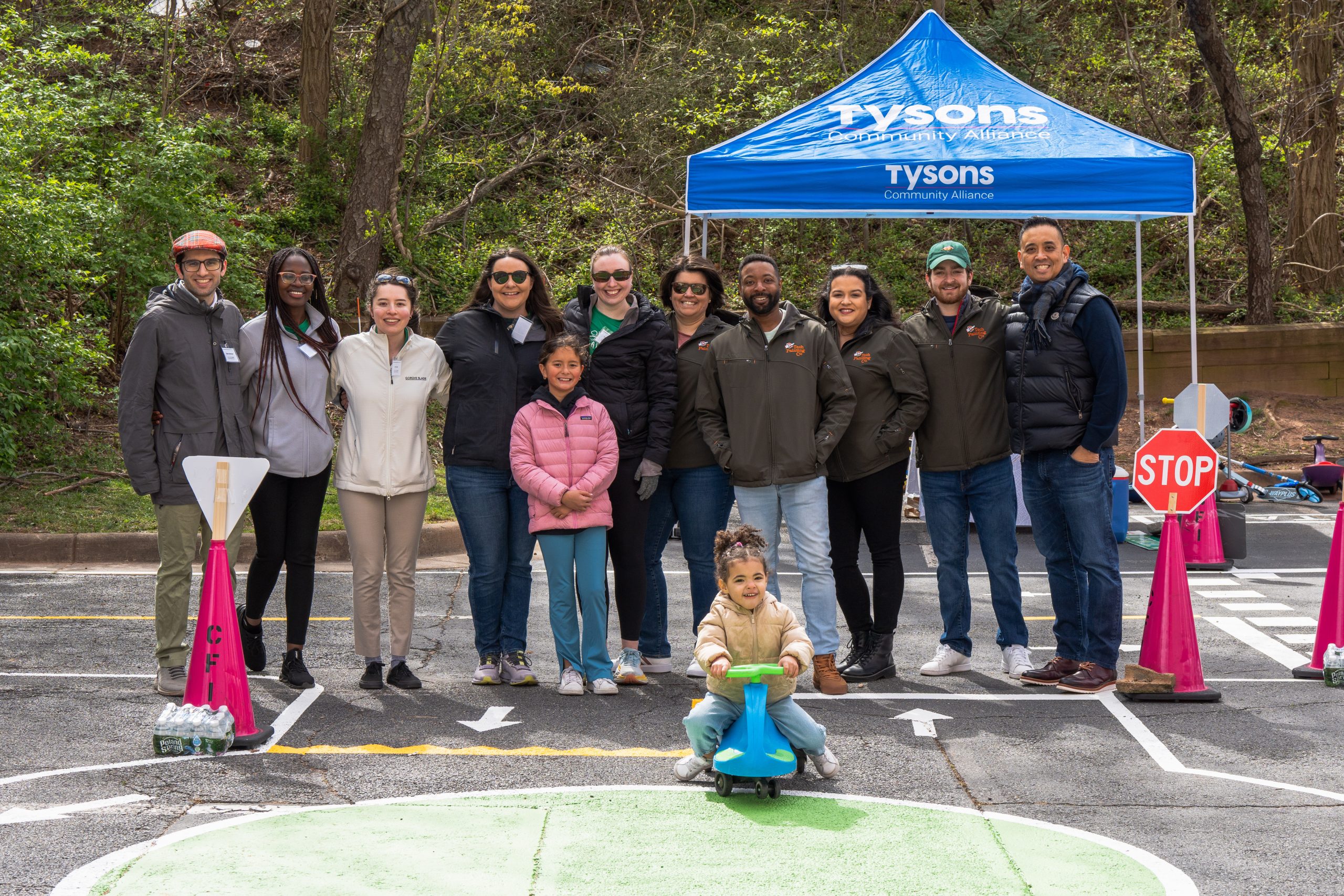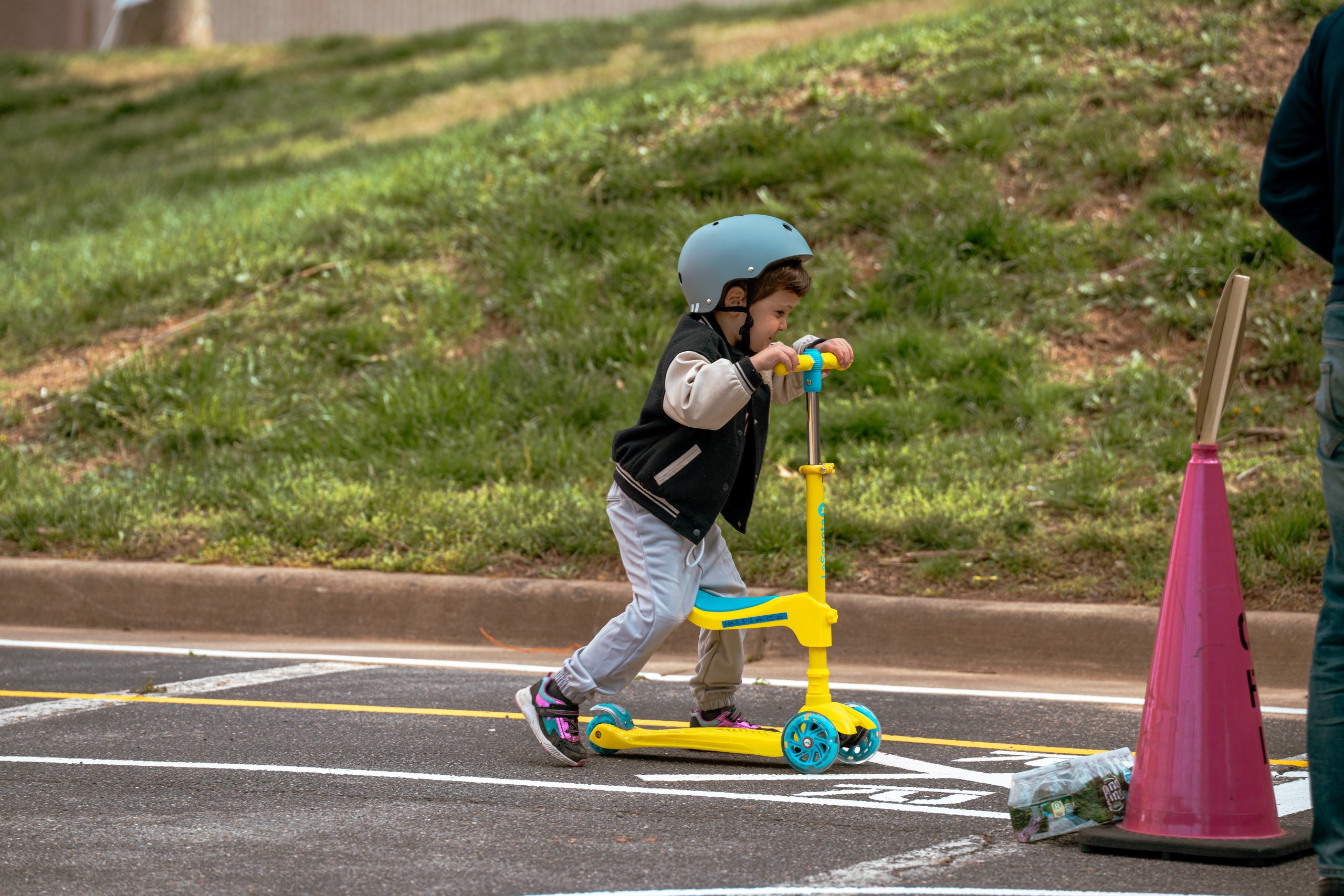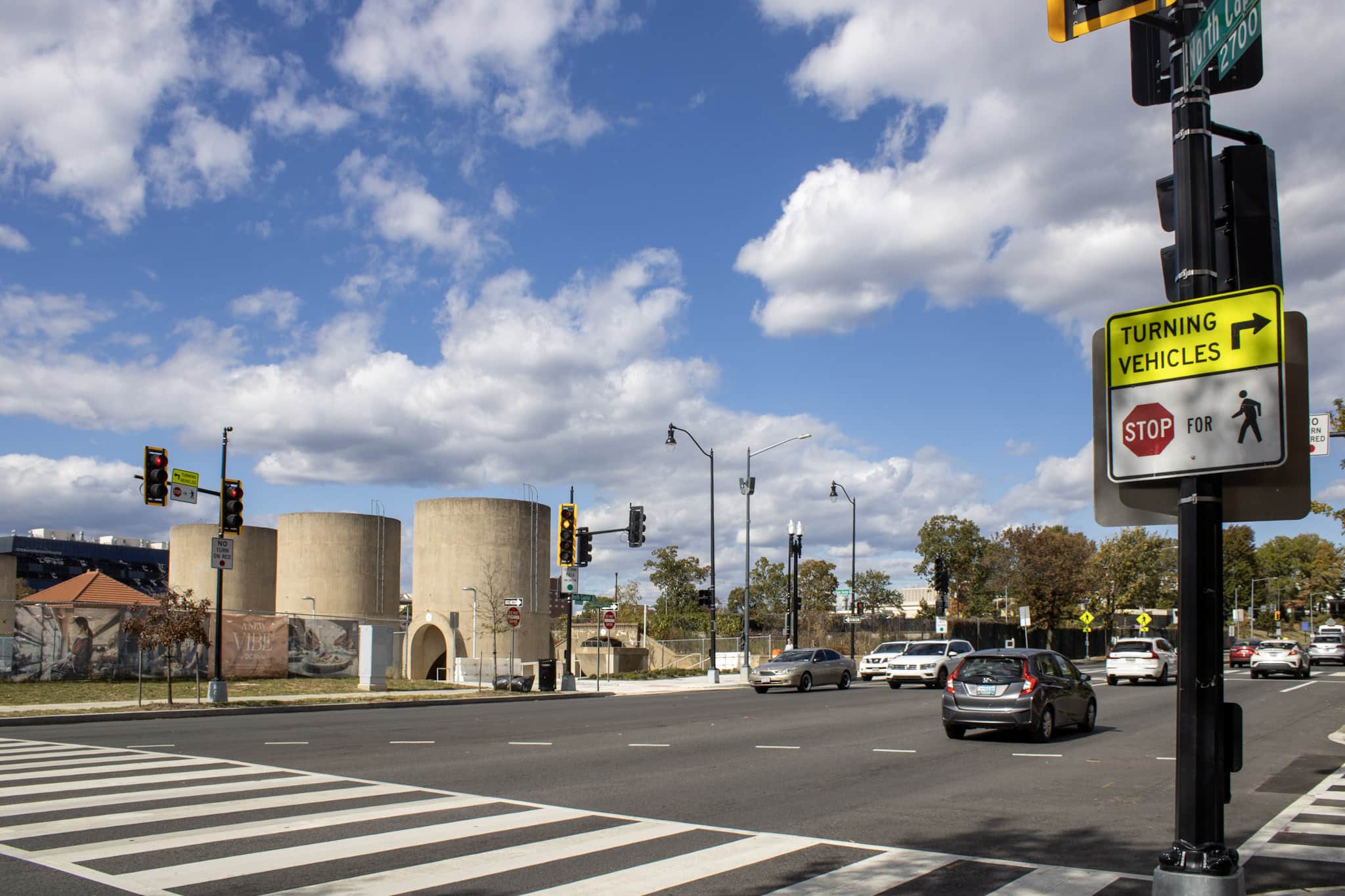
Mobility Maze: An Intentionally Playful Approach to Transportation Planning
Tysons Community Alliance (TCA) recently hosted an interactive Placemaking Fest, showcasing innovative approaches to community engagement and urban design. A standout feature of the event was the “Mobility Maze” traffic garden, a Gorove Slade-sponsored activity that playfully merged transportation planning concepts with interactive learning for the youngest of transportation enthusiasts. This miniature urban street network, complete with lanes, stop signs, sidewalks, and even a railroad crossing, offered young participants a hands-on experience navigating a scaled-down cityscape on scooters and balance bikes.
The Mobility Maze – officially known as StreetSmarts at the PARC – exemplifies a growing trend in suburban markets: integrating educational elements about transportation safety and urban navigation into community events. It’s not just about learning for industry partners, but about creating awareness and fostering safe habits among the youngest community members. Questions like “How do I use the crosswalk?” and “What is a roundabout?” were explored in a fun, engaging manner. This approach to community education aligns with our broader placemaking vision of demonstrating how thoughtful design can contribute to community safety and vibrant public spaces.


The success of the Mobility Maze extends beyond its immediate impact at the event. Fionola Quinn, a notable figure in traffic garden design across the U.S., attended and interacted with the installation. This recognition underscores the potential for such initiatives to influence broader discussions on urban planning and community engagement. Moreover, the positive reception from Fairfax County staff and Board Supervisors highlights the importance of these creative approaches in suburban development strategies. And a special shoutout to Tech Painting Company for their incredible work in co-sponsoring and bringing this shared vision to life.
As urban planners and community leaders look to the future, initiatives like the Mobility Maze traffic garden offer valuable insights into effective placemaking. They demonstrate how targeted activities can generate interest in broader urban visions while addressing practical concerns like safety and community cohesion. For the transportation planning community, this event serves as a reminder of the multifaceted nature of our work – where technical expertise meets community engagement, and where the seeds of future urban landscapes are sown in the imaginations of the youngest residents.



